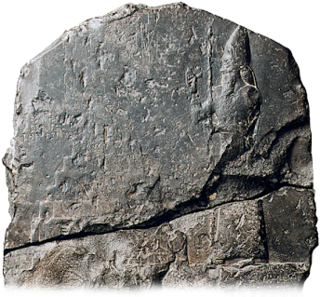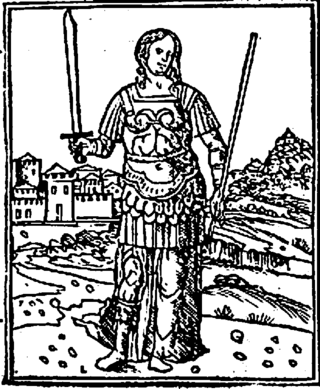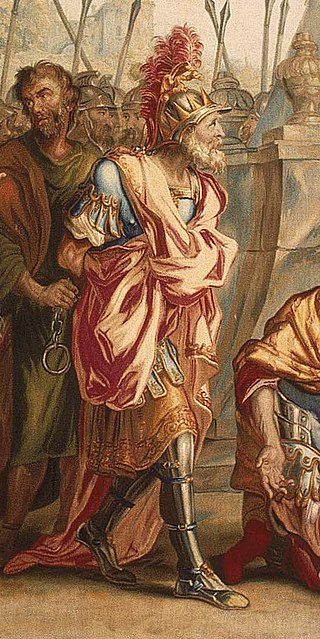
The fictional world in which the A Song of Ice and Fire novels by George R. R. Martin take place is divided into several continents, known collectively as The Known World.

Nebuchadnezzar II, also spelled Nebuchadrezzar II, was the second king of the Neo-Babylonian Empire, ruling from the death of his father Nabopolassar in 605 BC to his own death in 562 BC. Historically known as Nebuchadnezzar the Great, he is typically regarded as the empire's greatest king. Nebuchadnezzar remains famous for his military campaigns in the Levant, for his construction projects in his capital, Babylon, including the Hanging Gardens of Babylon, and for the role he plays in Jewish history. Ruling for 43 years, Nebuchadnezzar was the longest-reigning king of the Babylonian dynasty. By the time of his death, he was among the most powerful rulers in the world.

The Hanging Gardens of Babylon were one of the Seven Wonders of the Ancient World listed by Hellenic culture. They were described as a remarkable feat of engineering with an ascending series of tiered gardens containing a wide variety of trees, shrubs, and vines, resembling a large green mountain constructed of mud bricks. It was said to have been built in the ancient city of Babylon, near present-day Hillah, Babil province, in Iraq. The Hanging Gardens' name is derived from the Greek word κρεμαστός, which has a broader meaning than the modern English word "hanging" and refers to trees being planted on a raised structure such as a terrace.

Semiramis was the legendary Lydian-Babylonian wife of Onnes and of Ninus, who succeeded the latter on the throne of Assyria, according to Movses Khorenatsi. Legends narrated by Diodorus Siculus, who drew primarily from the works of Ctesias of Cnidus, describe her and her relationships to Onnes and King Ninus.

Babylon the Great, commonly known as the Whore of Babylon, refers to both a symbolic female figure and a place of evil as mentioned in the Book of Revelation of the New Testament. Her full title is stated in Revelation 17:5 as "Mystery, Babylon the Great, the Mother of Harlots and Abominations of the Earth".

John Carver was one of the Pilgrims who made the Mayflower voyage in 1620 which resulted in the creation of Plymouth Colony in America. He is credited with writing the Mayflower Compact and was its first signer, and was also the first governor of Plymouth Colony.

The Ishtar Gate was the eighth gate to the inner city of Babylon. It was constructed c. 569 BC by order of King Nebuchadnezzar II on the north side of the city. It was part of a grand walled processional way leading into the city.

Robert Johann Koldewey was a German archaeologist, famous for his in-depth excavation of the ancient city of Babylon in modern-day Iraq. He was born in Blankenburg am Harz in Germany, the duchy of Brunswick, and died in Berlin at the age of 69.

Astyages was the last king of the Median kingdom, reigning from 585 to 550 BCE. The son of Cyaxares, he was dethroned by the Persian king Cyrus the Great. He was a follower of the Vedic religion as per Iranian customs.
Katherine Roberts is an English author, best known for her fantasy trilogy The Echorium Sequence. She spent most of her childhood in Devon and Cornwall, England. She is the daughter of Derek Robert, an electrical engineer, and Dorothy Margaret, a teacher.
A distinction is made between Greek gardens, made in ancient Greece, and Hellenistic gardens, made under the influence of Greek culture in late classical times. Little is known about either.

Robin Atkin Downes is an English actor known for his work in animation and video games.
In popular fiction, a thieves' guild is a formal association of criminals who participate in theft-related organized crime. The trope has been explored in literature, cinema, comic books, and gaming, such as in the Fafhrd and the Gray Mouser story "Thieves' House" by Fritz Leiber and the role-playing game Dungeons & Dragons. Though these more modern works are fictitious, the concept is inspired by real-world examples from history, such as Jonathan Wild and his gang of thieves.

The Neo-Babylonian Empire or Second Babylonian Empire, historically known as the Chaldean Empire, was the last polity ruled by monarchs native to Mesopotamia. Beginning with the coronation of Nabopolassar as the King of Babylon in 626 BC and being firmly established through the fall of the Assyrian Empire in 612 BC, the Neo-Babylonian Empire was conquered by the Achaemenid Persian Empire in 539 BC, marking the collapse of the Chaldean dynasty less than a century after its founding.
The Seven Fabulous Wonders is a fantasy series by Katherine Roberts currently comprising seven novels. The novels are based on the Seven Wonders of the Ancient World.

The Seven Wonders of the Ancient World, also known as the Seven Wonders of the World or simply the Seven Wonders, is a list of seven notable structures present during classical antiquity. The first known list of seven wonders dates back to the 2nd–1st century BC.

Babylon was an ancient city located on the lower Euphrates river in southern Mesopotamia, within modern-day Hillah, Babil Governorate, Iraq about 85 kilometers south of modern day Baghdad. Babylon functioned as the main cultural and political centre of the Akkadian-speaking region of Babylonia. Its rulers establishing two important empires in antiquity, the 19th–16th century BC Old Babylonian Empire, and the 7th–6th century BC Neo-Babylonian Empire. Babylon was also used as a regional capital of other empires, such as the Achaemenid Empire. Babylon was one of the most important urban centres of the ancient Near East, until its decline during the Hellenistic period. Nearby ancient sites are Kish, Borsippa, Dilbat, and Kutha.
A hanging garden is a form of sustainable landscape architecture that can take several different forms, such as roof gardens, but will always be defined as a garden planted at a suspended or elevated position off the ground. These gardens are created with walls, fences, planted on terraces, growing from cliffs, or anything where the garden is not touching the earth. Space optimization is the main intention with the gardens, however, aesthetics and providing cleaner air are also popular reasons for setting one up. Hanging gardens are popular in urban environments where there is limited space, such as in New York or California.
Stephanie Mary Dalley FSA is a British Assyriologist and scholar of the Ancient Near East. Prior to her retirement, she was a teaching Fellow at the Oriental Institute, Oxford. She is known for her publications of cuneiform texts and her investigation into the Hanging Gardens of Babylon, and her proposal that it was situated in Nineveh, and constructed during Sennacherib's rule.













